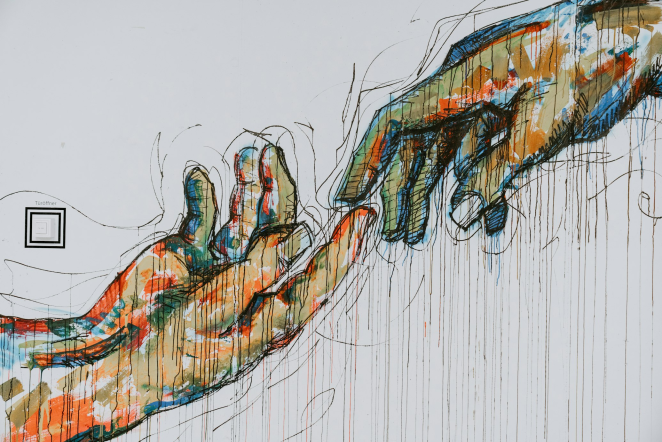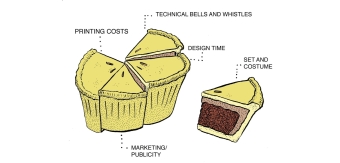Relationships are vital in life and in business. There are few professional relationships as important (and arguably codependent) however, as brands and agencies. This dynamic partnership can either propel both parties to brave new heights or, if mishandled, lead to unmet expectations, wasted resources and shattered dreams.
Building a strong client-agency relationship is, of course, always going to depend on the individuals involved. In general, however, it hinges on three fundamental pillars: feedback, trust, and clear communication. Today, I’ll take a deep dive into these elements and explore how they contribute to fostering healthy, transparent, and mutually beneficial partnerships.
The Role of Feedback in Client-Agency Relationships
Feedback is the lifeblood of any productive relationship, especially in the creative and dynamic environment of advertising. Constructive feedback helps both parties understand each other's perspectives, expectations, and areas for improvement. Here’s how feedback can be effectively utilized:

Zara Picken
Establishing a Feedback Loop: From the onset, both the client and the agency should agree on a structured feedback process. This involves setting regular meetings, creating a shared document for feedback, and ensuring that both positive and negative feedback is given timely. A well-defined feedback loop prevents misunderstandings and allows for continuous improvement.
Constructive Criticism: Feedback should always be constructive. Clients should aim to provide specific, actionable insights rather than vague criticisms. For instance, instead of saying, "I don't like this ad," a client might say, "The message doesn't align with our brand's tone; could we make it more playful?"
Encouraging Openness: Agencies should foster an environment where clients feel comfortable providing honest feedback. This can be achieved by showing appreciation for feedback, demonstrating changes based on client input, and maintaining an open, non-defensive attitude during discussions.
Trust: The Foundation of Strong Partnerships
Trust is the cornerstone of any successful client-agency relationship. Without it, collaboration becomes stilted, and the creative process is hampered. Trust can be cultivated through several key practices:

DENNIS OTIENO
Transparency: Transparency in all dealings builds trust. Agencies should be upfront about their processes, timelines, and any potential challenges. Similarly, clients should be clear about their expectations, budget constraints, and any internal pressures that might impact the project.
Consistency: Consistency in delivering on promises strengthens trust. When agencies consistently meet deadlines, stay within budget, and deliver quality work, clients feel more confident in their capabilities. This reliability encourages clients to entrust agencies with more significant and impactful projects.
Expertise and Competence: Demonstrating expertise and competence is essential for building trust. Agencies should showcase their experience, past successes, and innovative approaches. Clients, in turn, should acknowledge and respect the agency's expertise, allowing them the creative freedom to produce their best work.
Mutual Respect: Trust is also built on mutual respect. Both parties should respect each other's roles and contributions. Clients should value the agency's creative insights, and agencies should appreciate the client's deep understanding of their brand and market.
Clear Communication: The Key to Seamless Collaboration
Clear communication is vital in ensuring that both the client and the agency are aligned in their goals and expectations. Effective communication strategies include:

Davide Saraceno
Defining Clear Objectives: At the start of any project, clear objectives should be established. Both parties need to agree on the goals, target audience, key messages, and success metrics. This clarity ensures that everyone is working towards the same end and helps in evaluating the project's success.
Regular Updates: Regular communication helps keep projects on track. This includes scheduled meetings, progress reports, and open channels for ad-hoc queries. Regular updates prevent surprises and allow for real-time adjustments.
Utilizing Technology: Leveraging communication tools can enhance transparency and collaboration. Project management software, shared workspaces, and communication platforms like Slack or Teams can keep everyone informed and engaged.
Active Listening: Communication is a two-way street. Both clients and agencies should practice active listening, where they fully concentrate, understand, respond, and then remember what is being said. This ensures that all concerns are addressed, and ideas are thoroughly vetted.
Clarifying Assumptions: Misunderstandings often arise from unspoken assumptions. Both parties should make an effort to clarify any assumptions they might have about the project, roles, or outcomes. This can be done by asking clarifying questions and summarizing discussions to ensure alignment.
Building a Sustainable Partnership
Building a strong client-agency relationship is not a one-time effort but a continuous process. Here are some long-term strategies to maintain and strengthen this partnership:

Regular Review Sessions: Periodic review sessions can help assess the health of the relationship. These sessions should go beyond project reviews and focus on the overall collaboration, communication effectiveness, and areas for improvement.
Celebrating Successes: Celebrating successes together can reinforce a positive relationship. Whether it's a successful campaign launch or achieving a significant milestone, acknowledging these wins helps in building a sense of shared accomplishment.
Flexibility and Adaptability: The advertising landscape is always evolving. Both clients and agencies should be flexible and adaptable to changing market conditions, new technologies, and emerging trends. This adaptability ensures that the partnership remains relevant and effective.
Investing in Relationship Building: Finally, investing time and effort in relationship-building activities, such as team-building exercises, workshops, or informal get-togethers, can strengthen the bond between the client and agency teams. This personal connection can enhance professional collaboration.
A Road Worth Taking
A naturally cultivated symbiotic relationship can lead to more innovative campaigns, greater brand success, and long-term collaboration that benefits both agencies and brands. By no means am I saying it’s a short and easy road but it’s certainly one worth taking.
Header Image by Paula Garcia




